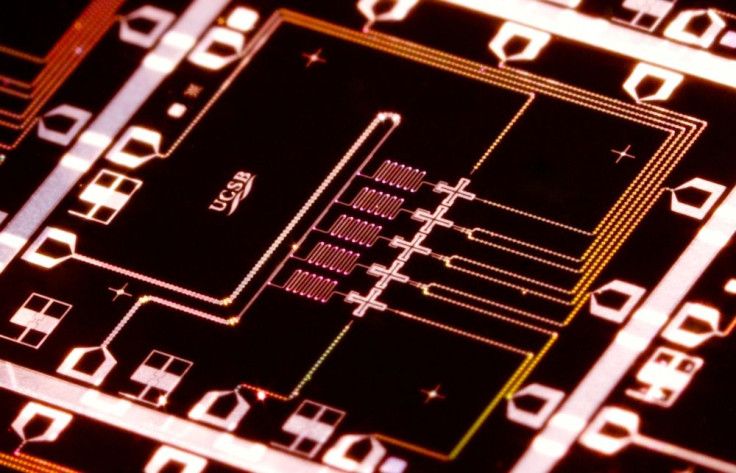In A Major Breakthrough In Quantum Computing, Scientists Build Self-Correcting Quantum Device

A team of scientists from Google Inc and the University of California, Santa Barbara, announced on Wednesday that they are now a step closer to the development of a fully functional quantum computer. Such a machine, if developed, would be capable of performing calculations that would take a conventional computer millions of years to complete.
The development of quantum computers capable of performing operations many orders of magnitude faster than conventional computers has been a goal of computer scientists and physicists ever since the idea was first floated in the early 1980s. However, given the inherently unstable nature of “qubits” -- the quantum computing equivalents of bits -- the goal has remained out of reach.
Quantum computers utilize two basic properties these qubits possess -- superposition and entanglement. Unlike conventional bits, which can exist in one of the two states, 0 and 1, qubits can exist in superposition, allowing them to have both states at the same time. This superposition of qubits, coupled with quantum entanglement -- wherein they are physically separate but act as if they are connected -- is what gives quantum computers a significant advantage over conventional computers. This phenomenon, however, presents a unique paradox, exemplified by the famous Schrodinger’s cat.
A basic operation of any computer is to check for mistakes. But, under the rules governing quantum physics, the very act of observing the system to check for mistakes is likely to create an error, as it would alter the spin of the entangled particles. This is because -- much like Schrodinger’s cat -- prior to the act of measurement, the particles don’t have a definite state, but are in a superposition of all possible states.
The researchers claimed, in a paper published in the journal Nature, that they have devised a new technique that would allow some of the qubits to check their neighbors for errors without injecting new mistakes in the process. This, the researchers said, was accomplished by creating a circuit in which four qubits were used to check for errors in five other data qubits in a matrix. This suggests that much larger arrays of qubits that are composed of tens of thousands of such particles, might be able to control the errors without modifying the fragile state of the qubits stored in the machine.
“We have for the first time in the long history of quantum computing an actual device, where we can test all of our ideas about error detection,” Rami Barends, a quantum electronics engineer at Google and one of the authors of the paper, reportedly said.
“Our demonstration that information can be stored with lower error in logical states than in single physical qubits shows that the basic physical processes required to implement surface code error correction are technologically feasible,” the researchers said, in the paper. “We hope that our work will help accelerate research into the many outstanding challenges that remain.”
However, Daniel Gottesman from the Perimeter Institute, Canada, who was not part of the research team, reportedly said that a lot of work remained to be done to ensure that all the error-checking elements required for “fault-tolerant quantum computation” are in place. “But I do think this work shows that we are close,” Gottesman added.
© Copyright IBTimes 2024. All rights reserved.






















